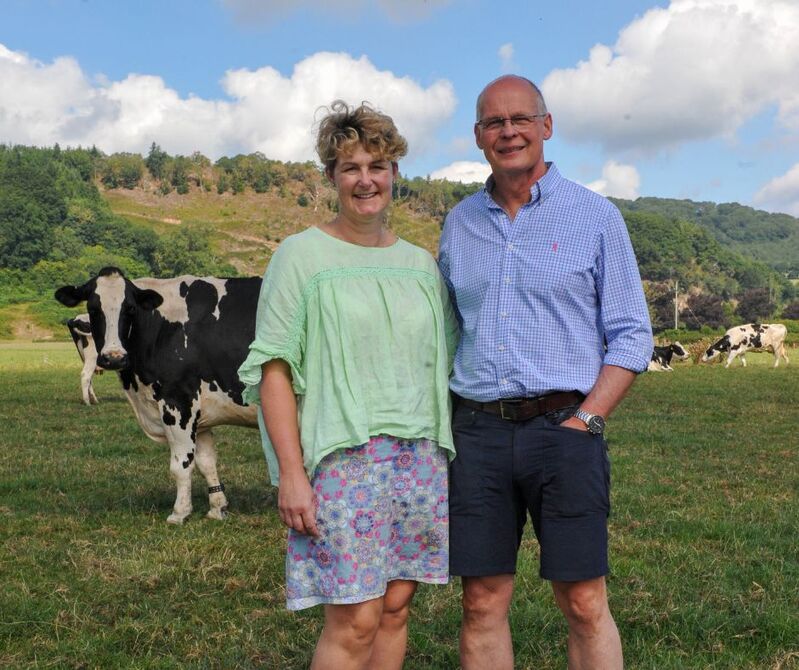Dairy farming has had its ups and downs in recent years and there are challenging times ahead, not least from nitrate controls and labour shortages. But with a strong milk price and solid global demand, Powys dairy farmer Jonathan Wilkinson sees nothing but opportunity for milk producers.
“There is very good reason to be optimistic, I genuinely believe there are exciting times ahead for our industry,” insists Jonathan, who chairs NFU Cymru’s Dairy Board.
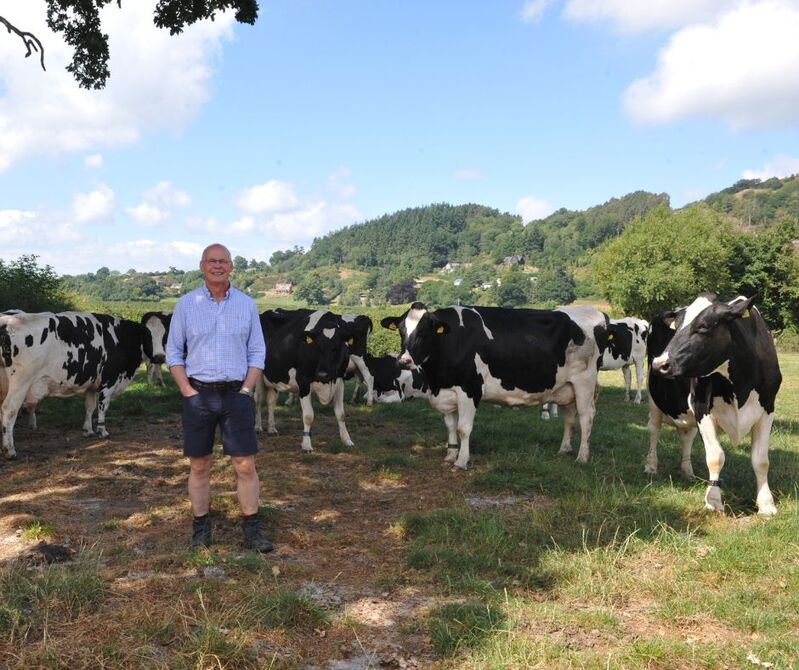
Modern system
He is the third generation of the Wilkinsons to produce milk at Dyffryn Farm, Meifod - his grandfather bought the 385-acre holding in 1956 and would undoubtedly be awestruck by the modern system now in place.
A 44-point rotary parlour and use of cutting-edge technology, from sexed semen for producing all herd replacements to cow pedometers that enable accurate heat detection, reflects an industry that has continually pushed forward since the first cows were milked at the farm.
Jonathan farms in partnership with his wife, Susie, who is as busy off the farm as she is on it - she is a physiotherapist at the Orthopaedic Hospital in Oswestry and also sits as a medical professional on a social entitlement tribunal.
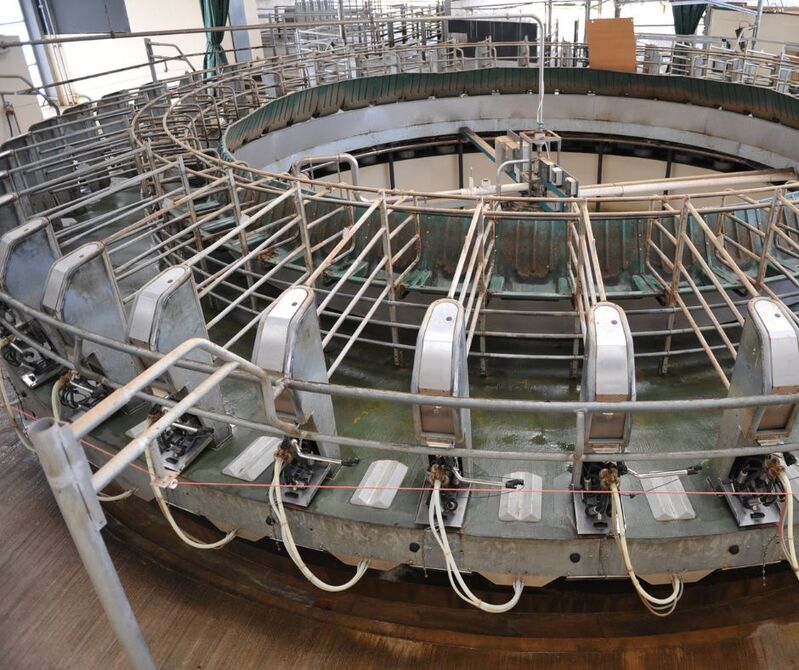
Pedigree herd
At the heart of their business is the pedigree Pendyffryn herd – 350 high genetic merit Holstein cows producing an average individual milk yield of 10,000 litres a year.
Four years ago, cow numbers were boosted when they imported 75 in-calf red and white Holstein heifers from Holland.
That purchase accelerated expansion plans but the unexpected sale 18 months ago of a farm the Wilkinsons had been renting over the long term forced a rethink on business growth.
Herd improvement
With acreage reduced to 505 acres the focus has shifted from cow numbers to an even greater emphasis on herd improvement through breeding strategies.
All dairy calves are bred from the use of sexed semen and the success rate has been impressive - 95% of dairy calves now born on the farm are females.
“Sexed semen has really sped up the improvement of the herd, we have got a consistency in the herd that I have not seen before,” says Jonathan.
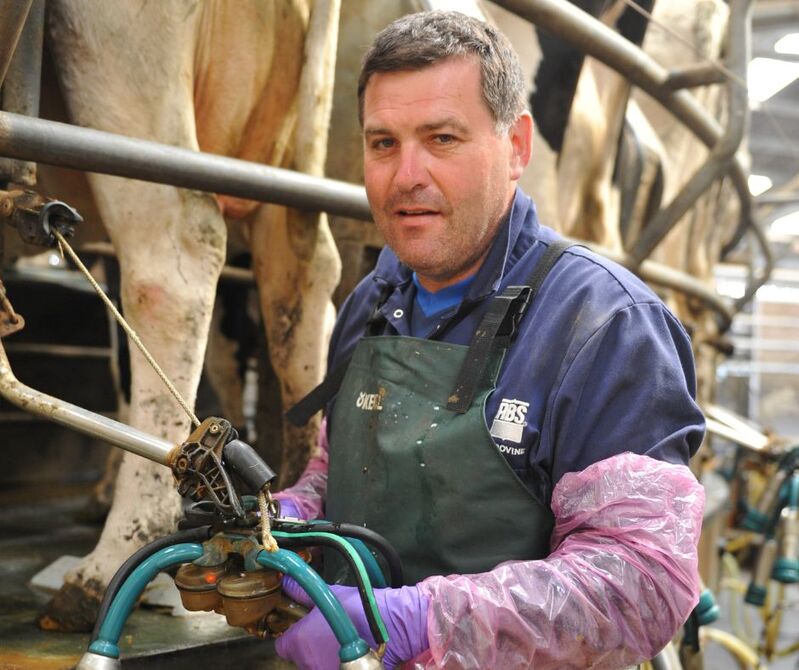
Some genomic sires are used with the aim of breeding a balanced cow, one with strength, body depth, udder, legs and feet. Longevity is very important too - there are cows in the herd that are in their 11th lactation.
The workforce
While the herd is a major asset to the business, so too is the workforce.
At a time when the dairy industry is struggling with staff recruitment and retention, the strong team at Dyffryn Farm reflects the value the Wilkinsons place on their employees - herdsman Carl Poole, assistant herdsman, Wayne Williams, and part-time general worker, Adrian Williams.
Carl has worked at Dyffryn since 2005 and has been influential in the development of the herd, says Jonathan.
“Carl has built on years of breeding through careful choice of bulls.”
Industry awards
Jonathan credits him for the herd winning the North Wales Holstein Club’s Herd Championship for four years in succession.
The business also works closely with consultant Adrian Caine, of P & L Agri-consulting, on cow nutrition and business planning, and vet Rob Edwards, of Cain Vets, who visits fortnightly and monitors cow health and fertility.
Herd nutrition is based on four cuts of high-quality grass silage and 105 acres of maize. Up to 2.5 tonnes of concentrates are fed per cow annually.
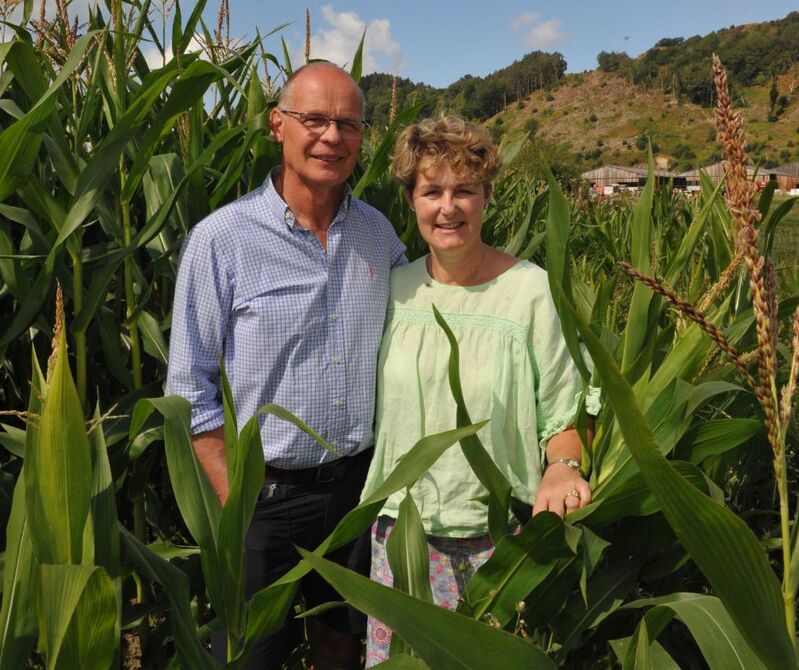
Feed challenges
In common with many farms, the exceptionally hot and dry summer could present feed challenges this winter, Jonathan anticipates.
“It is going to be really tight. We will be doing what a lot of livestock farmers will be doing and culling out any passengers harder than we normally would.”
Pressure on milk supply
That situation will put pressure on milk supply nationally.
“There will be a lot more cows taken out of the system than we would usually see,” Jonathan predicts.
With the tightening of supply has come a stronger milk price. “We are receiving 20p a litre more than we were this time last year, which means there is more money coming in, but there is also a lot more going out with much higher feed and fertiliser prices,” he says.
“Susie looks after the accounts and stops me getting too excited when the milk cheque comes in by reminding me of our bills!”
He thinks pressure on milk supply will persist for some time. “With all the rules around expansion I can’t see that situation changing.
“Our main buyers, the supermarkets, will have to pay to secure their supply.”
The milk production system at Dyffryn Farm revolves around low yielders at grass during the grazing season and high yielders fully housed.
Milk with a rolling annual butterfat average of 4.2% and 3.35% protein is sold to Muller Direct.
Biodigester
Slurry from the herd is helping to produce electricity via a biodigester thanks to a partnership with a local broiler producer, a strategy that is helping the Wilkinsons’ plan for the new pan-Wales Nitrate Vulnerable Zone (NVZ) regulations; they are also increasing slurry storage capacity.
The farm has a Glastir Advanced agreement, with valuable points accrued from an Iron Age hill fort that sits high above the farmstead. The contract includes maintenance of that important historical feature as well as double fencing and hedge planting schemes.
Tree cover targets
The farm could meet, if not exceed, the proposed 10% tree cover and habitat requirements in the Sustainable Farming Scheme (SFS) but Jonathan says there are many question marks that need to be resolved in the next phase of the co-design.
“We need to know more about habitats and tree planting, I would feel more comfortable about the scheme if I knew more.
“In its current form there are potentially serious consequences for tenants, they have no control over what they can plant on the land and the landlord often maintains control of existing woodland.”
Farmers referred to as farmers
But he was heartened to see farmers referred to as ‘farmers’ in the recently published scheme document and not land managers, and for food production to get a mention too.
“To give credit where credit is due, that is a big step forward and I am sure that some of the other issues can be ironed out too.”
Resolving these is not only important for the current generation of farmers but for successive generations too, but he is confident that the future of the Welsh dairy industry is secure in the hands of the next crop of farmers.
“I recently visited five dairy farms when I was stewarding a herd competition and I saw young farmers adopting new technologies and bringing a new energy to those businesses, they are less fixed in their ways and more inclined to try new things.”
Succession planning
Jonathan and Susie’s daughters, Amber and India, are both medical students at Cardiff University and with their future careers mapped out in medicine, succession planning is very much on the couple’s minds.
While there are events that they can plan for, others are unexpected and unwelcome. Jonathan was diagnosed with cancer in 2013 and more recently suffered a heart attack, while Susie is back to full health after treatment for cancer some years ago. Those experiences tested their resilience and gave them a fresh outlook on life.
Enjoying the fruits of farming
“We bought a paddle board this summer and have had great fun with it on the river that runs through the farm,” says Jonathan.
A welcome moment to kick back from the day-to-day responsibilities of running a dairy farm and enjoy the fruits of farming in the beautiful Powys countryside, on the banks of the River Vyrnwy.
